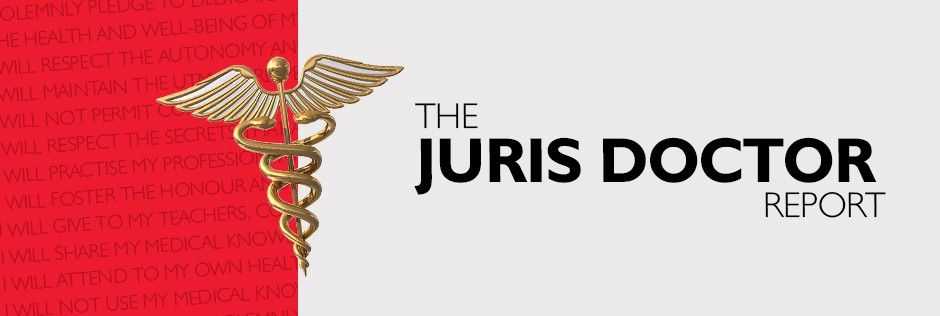For more information about this blog post, please contact Khaled J. Klele, Ryan M. Magee, Labinot Alexander Berlajolli, or Connor Breza.
On November 2, 2021, the Centers for Medicare & Medicaid Services (“CMS”) released three final payment rules updating the annual payment rate for physicians, outpatient services, and home health services, among other significant policy changes. Each rule will have a significant impact on these three segments of the healthcare system and providers should be aware of how these changes will affect their practice and their payment rates and methodologies.
Of significant concern, CMS cut reimbursement rates to physicians, despite physicians having played, and continuing to play, a crucial role in the fight against COVID-19. Just as significant, not only did CMS finalize its proposal to halt the elimination of the inpatient-only list, but it crawled back and eliminated 258 services that it had previously included on the ambulatory surgery center payable list. Additionally, all CMS-certified Home Health Agencies will be required to participate in the Home Health Value Based Purchasing payment model.
We noted in our past Healthcare Update that not much, if anything, has been done since President Biden’s Executive Order in July 2021 addressing consolidation in the United States, but these rules from CMS will certainly fuel what the Executive Order was intended to scale back.
Physician Fee Schedule Final Rule
CMS issued its 2022 Physician Fee Schedule Final Rule, which addresses changes to the Medicare Physician Fee Schedule (“PFS”), Medicare Part B payment policies and relative value of services, and Medicare Shared Savings Program requirements, and implements certain provisions of the Consolidated Appropriations Act of 2021 (“CAA”).
In a move that is certain to impact physicians, CMS reduced the conversion factor for the provider reimbursement calculation from the 2021 rate of $34.89 to $33.5983 for 2022. Similarly, the National Average Anesthesia Conversion Factor will be reduced to $20.9343. The conversion factor is the multiplier that Medicare applies to relative value units (“RVUs”) to calculate reimbursement for services and procedures payable under Medicare’s fee-for-service system. As a result, this reduction of $1.2917 will have a significant impact when used as a multiplier across the board. Voicing a growing sense of concern with this change, the President of the American Medical Association, Gerald Harmon, M.D., issued a November 2nd statement warning that the final rule “is a reminder of the financial peril facing physician practices at the end of the year.”
In addition, effective January 1, 2022, the payment rates for the administration of the influenza, pneumococcal, and hepatitis B virus vaccines will increase from $16.94 per dose to $30.00 per dose. CMS will also continue with the current payment rate of $40 per dose for the administration of the COVID-19 vaccines until the end of the calendar year in which the COVID-19 public health emergency ends, at which point the payment rate for COVID‑19 vaccine administration will be modified to align with the payment rate for the administration of other Part B preventive vaccines.
For the first time, the PFS contains a set of CPT codes for remote therapeutic monitoring (“RTM”). These new RTM codes are largely modeled after existing codes for remote physiological monitoring (“RPM”). In recent years, CMS finalized seven codes in the RPM family that now include services similar to the new RTM codes. While there are notable similarities between the two sets of code descriptors, there are two primary differences. One difference is that primary billers of RTM codes are projected to be nurses and physical therapists. Stakeholders have suggested that the new RTM coding was created to allow practitioners who cannot bill RPM codes to furnish and bill for services that look similar to those of RPM. RPM services are considered to be Evaluation and Management (“E/M”) services, and physical therapists, for example, are practitioners who cannot bill E/M services. The RTM codes, instead, are general medicine codes. The second difference is that virtually any information that a medical device can collect, such as medical adherence, can be collected and billed under the new RTM rules. That is not the case under the existing RPM codes.
Finally, given the substantial increase in the use of telehealth services since the start of the pandemic, as part of the PFS, CMS is set to redefine “interactive telecommunications system” to permit use of audio‑only technology for mental health telehealth services provided to beneficiaries in their home, as long as there has been an in-person visit within the six months of any telehealth counter that is documented in the patient’s medical record. Pursuant to a waiver, audio-only telemental health services have been reimbursed during the public health emergency for COVID-19. Given the generalized shortage of mental health professionals, and the existence of populations with limited access to broadband due to socioeconomic and geographic challenges, there exists a concern that sudden discontinuation of audio‑only communication technology when the public health emergency expires could negatively impact access to care. CMS will be requiring a modifier to be used with the claim to indicate that the service was provided via audio-only communication technology to monitor the costs associated with this policy.
CMS issued a fact sheet for the 2022 Physician Fee Schedule.
Outpatient Prospective Payment and ASC Final Payment Rule
CMS issued, 86 FR 63458, the Outpatient Prospective Payment System and Ambulatory Surgery Center Payment final rule, which aims to revise the Medicare hospital outpatient prospective payment system (“OPPS”) and the Medicare ambulatory surgery center (“ASC”) payment system for the incoming 2022 calendar year. The provisions of the final rule are effective January 1, 2022.
Of significant concern to ASCs, CMS not only finalized its proposal to halt the elimination of the inpatient-only list (“IPO”) list, but it added back 298 services to the IPO list that were previously removed. Concurrently, CMS then removed 258 services from the ASC payable list. The only exceptions are 22630 (lumbar spine fusion), 23472 (reconstruct shoulder joint), 27702 (reconstruct ankle joint) and their corresponding anesthesia codes.
The payment rates under the OPPS by an Outpatient Department (“OPD”) fee schedule will increase by a factor of 2.0 percent beginning January 1, 2022. However, hospitals that fail to meet the Hospital Outpatient Quality Reporting Program requirements will face a reduction to the OPD fee, which would result in a proposed reduced conversion factor for 2022 of $82.810 for hospitals.
CMS is also increasing the penalties for non-compliance with respect to hospital price transparency requirements, based on the number of hospital beds. The civil monetary penalties (“CMPs”) imposed under the rule are as follows: (a) for a non‑compliant hospital with a number of beds equal to or less than 30, the maximum daily dollar CMP amount would be $300; (b) for a non‑compliant hospital with a number of beds between 31 and 550, the maximum daily dollar CMP amount would be the number of beds times $10; and (c) for a non‑compliant hospital with a number of beds greater than 550, the maximum daily dollar CMP amount would be $5,500.
CMS issued a fact sheet for the 2022 OPPS and ASC payment system.
Home Health Prospective Payment System Final Rule
The Home Health Prospective Payment System final rule for Calendar Year 2022, 86 FR 62240, carries out the annual update to the payment rates for home health agencies (“HHAs”) for 2022 and recalibrates the case-mix weights for determining payment under the HHA Patient‑Driven Groupings Model (“PDGM”) payment system.
Under this final rule, the payment rate for HHAs that submit the required quality data for CY 2022 will be increased by 2.6 percent. For HHAs that do not submit the required quality data for CY 2022, the home health payment update is only 0.6 percent (2.6 percent minus 2 percentage point penalty).
Additionally, this rule finalizes the proposed changes to transparency, oversight, and enforcement requirements for hospice programs. These changes will require the use of multidisciplinary survey teams, prohibit surveyor conflicts of interest, and expand CMS‑based surveyor training to accrediting organizations. The rule also finalizes the proposed provisions for a hospice program complaint hotline and creates the authority for imposing enforcement remedies for non‑compliant hospice programs, including the development and implementation of a range of remedies, as well as procedures for appealing determinations regarding these remedies.
Another significant provision is the rule’s finalization of CMS’s plans to expand the Home Health Value Based Purchasing (“HHVBP”) Model to all Medicare-certified HHAs across the United States, beginning January 1, 2022. Note, however, that 2022 will be designated as a pre-implementation year, and the first performance year will be 2023, with 2025 as the first payment year. All HHAs certified to participate in the Medicare program prior to January 1, 2022, would be required to participate and eligible to receive an annual Total Performance Score based on their CY 2023 performance.
CMS issued a fact sheet for the HHA payment system.




